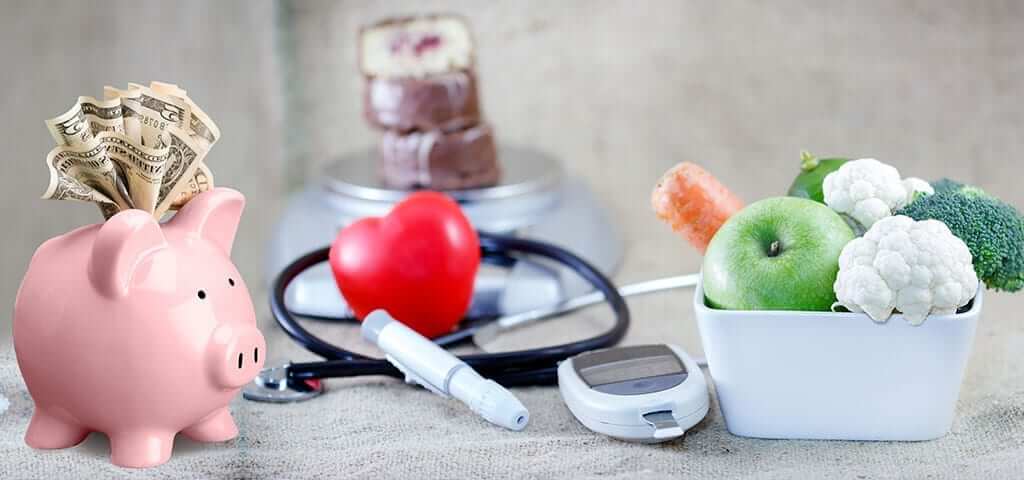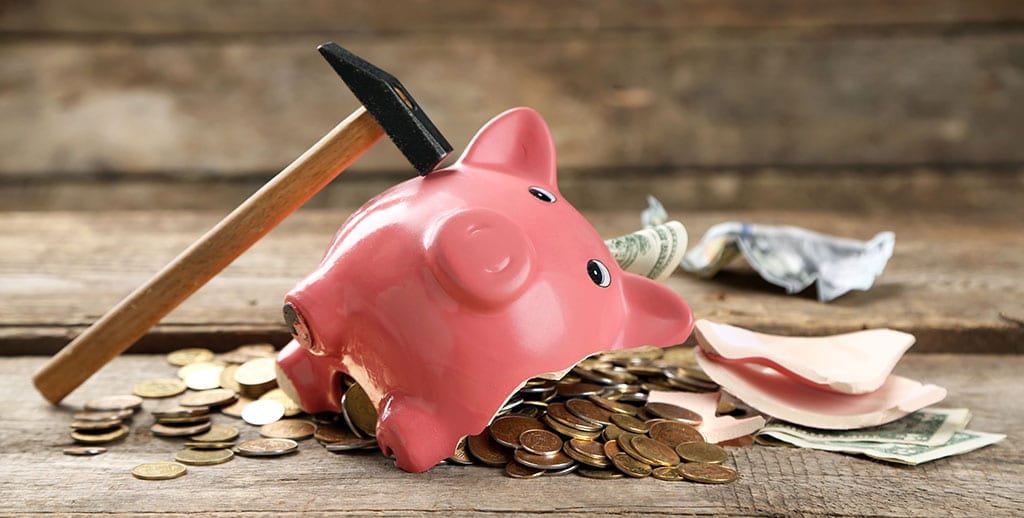Diabetes is on the rise worldwide and is no longer considered, “a disease of just rich nations”. It is difficult to be saddled with a chronic illness including diabetes for many reasons. The cost of daily living in the United States keeps going up along with the cost of diabetes. It is not “a cheap” disease.
The day to day concerns of regulating blood sugars, reducing the possible future risks of diabetes complications such as eye, nerve, heart and kidney problems and the never-ending expenses is enough to cause anxiety and depression in most everyone. Even with health insurance, diabetes can be expensive. “20% of people with diabetes ages 45-64 years old, reduced or delayed diabetes medication in 2015, to save money.” This eventually leads to higher costs when problems arise from skipping medications. Please read on to learn some easy and practical ways to save money with diabetes.
Local Pharmacies/Chain Pharmacies/On-Line Pharmacies
It is a wonderful idea to comparison shop for medications. It is common knowledge that drug prices can vary among pharmacies for even the simplest diabetes medications, such as Metformin. Check between Target, Costco, Walmart or other big box stores for better medicine pricing. Name brands always cost more, extended release versions cost more, and prices may even vary for the same exact pill. One store may charge $20.00 for a 60-day supply of diabetes pills while another store could charge $8.00 for the same prescription. The easiest way to shop around is by using websites that specialize in drug price comparisons. Research GoodRX, Lowest Med or WellRx to help you locate the best pricing in pharmacies near you. These sites not only compare pricing, but they allow you to print money saving coupons which can be redeemed at your local pharmacy. They can help you save money whether you have health insurance or not. It is best to stick with and shop at one pharmacy for all your medications, so they can monitor all your prescriptions for drug interactions. If you have health insurance with a drug plan, ordering a 3-month supply from your mail order pharmacy will provide you the best pricing. You may not be able to meet and discuss “face to face,” with a pharmacist all your concerns, but all mail order companies do provide you with access to a registered pharmacist for specific questions. Canadian on-line mail order pharmacies, although frequently used, are still, “technically illegal under federal law.” Talk to your health care provider if money is a concern and they may be able to prescribe a generic brand.
Most people tolerate and get good results when taking generic brands. Certain diabetes medications are often combined into one pill which may or may not be less expensive. Current insulin prices warrant a complete article on its own. Luckily, this is now being discussed by our government lawmakers and hopefully, change will come soon. In the meantime, talk to your health care provider about which insulin will work best for you, but remain affordable as well. There are many options. Never change or delete any of your medications including insulin, even due to high prices, before consulting with your physician or health care team.
Healthy Eating on a Budget
A healthy eating plan does not have to cost more than an unhealthy one. Think about joining Costco or Sam’s club to purchase food in bulk for lower prices. Even if you are only cooking for one or two people, you can still purchase, prepare, cook, freeze and defrost meals that are properly portioned and wrapped individually. Buy chicken parts on the bone with skin or a whole chicken instead of buying skinless / boneless breasts to save money. Buy lower price cuts of meat such as chuck and marinate them overnight to make them more tender. Shop at stores such as Aldi, which offers no frills and expects you to self-pack your groceries. Even on-line services, like Amazon or Walmart, may be able to save you money on food.
Purchase fresh vegetables and fruit only when they are in peak season. Use local farmer’s markets when available or start to grow some of your own vegetables. Vine tomatoes are especially easy to grow in small areas. Buy herb plants and cut off what you need instead of individually wrapped herbs which are more expensive and go bad quickly.
Buy frozen fruit in no syrup, frozen vegetables in no sauce and keep them ready always. Carry discount coupons in a pouch, keeping them ready to go instead of leaving them at home or in the car. Don’t forget that most coupons expire quickly. Research coupons easily found on your mobile phone and present them at the register. Cut out all empty calories such as processed and bagged foods, added sugar foods, saturated fat foods and drinks with calories (excluding milk) to save you money and help control your diabetes. Avoid foods that are pre-wrapped, pre-sliced, pre-cut, pre-washed, pre-cooked or individually wrapped which are all more expensive. Do not buy products that say, “low fat, low sugar, diabetic foods, or dietetic foods”, since they may have more fat in the low-sugar variety and more carbohydrates in the low-fat variety. They still contain plenty of carbohydrates and calories and will not help your diabetes. Use local fliers found in the store and advertisements found in the newspaper for specific specials. Purchase “store brands” instead of name brands since the taste and quality often match.
Plan a week’s menu
Plan a week’s menu, print out and carry a list of ingredients you will need. Do not deviate from that list. Avoid impulse shopping and never go to the store before a meal or when you are hungry. Have a “set spending budget” before you leave the house and do not change it. You can remove items from the grocery belt even after they are rung up by the cashier.Purchase frozen meals which include a protein, carbohydrate and cooked vegetables when on sale. Buy a dozen usually for the price of ten, but always check for calories, sodium, saturated fat and carbohydrate content. Add a fresh salad for a complete and satisfying meal. Cook large portions of food on the weekend or at the beginning of the week, so you will have left-overs. Instead of getting rid of left-overs, create a new recipe/dish using the same ingredients. Look online for Apps such as BigOven, which helps you recreate your left-overs. Buy $3.00 wine at Trader Joe’s instead of over-priced cooking wine to add rich flavor to your dishes. Buy kitchen staples in bulk such as olive oil, canned beans, canned soups and broths, brown rice, whole, grain dry pasta, condiments and canned fish.
Canned fish like tuna, salmon and sardines are loaded with healthy Omega 3 fatty acids, which can help lower inflammation and triglycerides at a much cheaper price than purchasing fresh fish. Try frozen fish as well making sure it is not fried but simply baked. Use a slow cooker which allows you to cook less expensive cuts of meat which will still taste delicious when prepared with broth, herbs and spices. Some grocery chains, such as Kroger, offer discount/reward cards for their returning customers. See if your local grocer has a discount/reward card. An App, named FAVADO, can help you locate the cheapest price of a specific product from a range of stores near you. Make your own salad dressings and marinades with a few simple ingredients, lemon juice, olive oil, garlic and fresh herbs for less money, and a healthier and better tasting product.
Share meals when eating out
Order two salads or two appetizers and one main course or split one whole meal. Try to find the most filling item on the menu. Drink only ice water with a slice of lemon or lime. Order seltzer water instead of bottled sparkling water. Eat fresh fruit at home for dessert.
Make your own healthy snacks
Carry healthy snacks with you like cheese sticks with whole grain crackers, single serving hummus containers with pretzels, or a group of grapes and a handful of almonds so when an emergency occurs (hypoglycemia), you will be ready and not need to buy over-priced and high carbohydrate snacks. Pop your own air pop corn and bake your own pumpkin seeds or kale chips with a bit of sea salt for better flavor and less expense. Do not buy prepackaged salad which is more expensive. Instead, wash, cut and prepare your own fresh salads with a variety of leafy greens. Wrap up the unused vegetables carefully to preserve freshness. When freezing foods, double wrap in Saran wrap and foil for added preservation and avoidance of freezer burn.
Finding Discounted/Low Cost Diabetes Supplies
Controlling blood sugars is critical for feeling your best day to day and helping you avoid future diabetes complications. Your 3-month A1C test alone does not provide enough information. You need to understand how diabetes affects you daily. This is where your diabetes supplies come in. When going through your health insurance plan, make sure to get the “preferred meter brand”, or you will pay more out of pocket, especially for the strips. Watch out for “free meter” which may require you to pay out of pocket for a higher (usually not covered) strip. You can get the cost of supplies down by purchasing products in bulk. Always check expiration dates of products and return unopened, if out of date. Online or mail order diabetes supply companies generally offer better pricing than local pharmacies. Some online companies, such as ADW Diabetes, can save you between 20-60% off retail pricing. They offer all the popular name brands but also offer other less known, reliable brands at a lower price. Some of these companies offer “automatic refills” or Autoship Program on a pre-determined basis, which, specially when paying out of pocket, may save you money as well.
Look for high quality products with less name recognition which may be cheaper than big brand names. Good quality products, which should cost less, are TrueMetrix, Novo Max, Presto and Contour. Online/mail order supply companies are great for people who do not have insurance, want privacy, do not want to travel to the pharmacy, who have limited mobility, who have busy schedules or who want real value for their dollars.
Purchase glucose tablets for low blood sugars in bulk, since they stay fresh for at least a year. Buy extra tubes of glucose tablets and keep them in the car, at the office, in your purse, in your gym bag, beach bag, golf bag and in your pocket to be ready for a low blood sugar emergency. Look online for Medic Alert ID bracelets at a reasonable price compared to your local pharmacy.
Lancets are extremely inexpensive very fine needles coated with a substance which makes the first stick clean and sharp so they should not be reused. Reusing a lancet causes the needle point to become dull which causes more pain. Reusing a lancet may prevent you from getting the blood droplet you need. As a certified diabetes educator, I do not recommend reusing insulin syringes or pen needles, either. These needles are also coated with a substance which dissolves after the first, clean, sharp stick. Purchase needles in bulk which can bring the cost down. If you insist upon reusing your insulin syringes or pen needles, do not wipe them with alcohol after use since it will further dull the reused needle. Never share needles. Dispose of used needles and lancets properly using a red container or sharps waste disposal container. Consult your local health department to see what correct disposal for your area is. You can also check out our article on How to Properly Dispose of Needles, Lancets and Blood Strips.
Exercise

Worthwhile Diabetes Education
Real diabetes education can help you avoid huge costs from complications down the road. Knowledge really is powerful when you have diabetes since self-care is what diabetes is all about. Medicare and most insurance companies cover a 10-hour diabetes course, taught by CDEs (certified diabetes educators). Take advantage of this free service since all you need is a prescription from your doctor. Go to AADE (American Association of Diabetes Educators) or the ADA (American Diabetes Association) websites to find a complete list of accredited and covered programs in your area. The YMCA now sponsors a pre-diabetes educational course with trained educators as well. Find diabetes educational books and recipe books on the ADA website which can be used as an extra resource. Read online, credible and reliable sites such as this to stay on top of diabetes information. Pay attention to diabetes blogs which will share personal stories but be careful of the advice as it may not always be medically reliable.
Free Diabetes Education and Samples
Visit free diabetes expos put on by the ADA or other educational organizations that sponsor free diabetes fairs and updating education. Take part in Diabetes Alert Day offered in hospitals or malls, which occurs in March for free diabetes screenings and free diabetes nutritional products. Look for rebates on free meters in weekly advertisements or newspapers. Some reputable diabetes support websites often collect diabetes supplies and offer them to those in need. Attend diabetes focus groups through marketing companies which may ask for consumer opinions about diabetes products and then offer free samples and a stipend. Find a free diabetes support group lead by a health professional in your area.
Patient Assistance Programs
Medicare and Medicaid are government programs which may help with diabetes medications and supplies. Medicare is a health program for people over 65 which covers diabetes supplies, prescriptions and diabetes education. Medicaid is a state government program based on your income, not age. Contact the Department of Health and Human Services to find out about eligibility. Merck, a large pharmaceutical company, has an assistance program for Januvia, a diabetes pill. Sanofi has an assistance program for Lantus insulin. Eli Lilly and Co. have “Lilly Tru Assist” that provides insulin for those in need. Takeda, Novo-Nordisk, Astra Zeneca and Johnson and Johnson also have patient assist programs. Most of the patient assist programs, “require that the applicant not have private insurance and show a need financially.” Some pharmaceutical companies offer “$5.00 a month only cards” with a prescription of their drugs; you or your physician’s office will be able to find out if you are eligible. Local organizations such as the Elk’s club, Rotary club, Lion’s club and Kiwanis club may provide financial assistance with medications and supplies or do fundraising for health-related conditions.
The MD Visit

Diabetes can be an expensive disease with lots of out of pocket dollars. Do not cut back on proper care or your medication and supplies, but find and use ways to make diabetes more affordable and manageable. Good Luck!
Have a question or comment? Then post below, no registration required. I would love to hear from you!
NOTE: Consult your Doctor first to make sure my recommendations fit your special health needs.









Leave A Comment